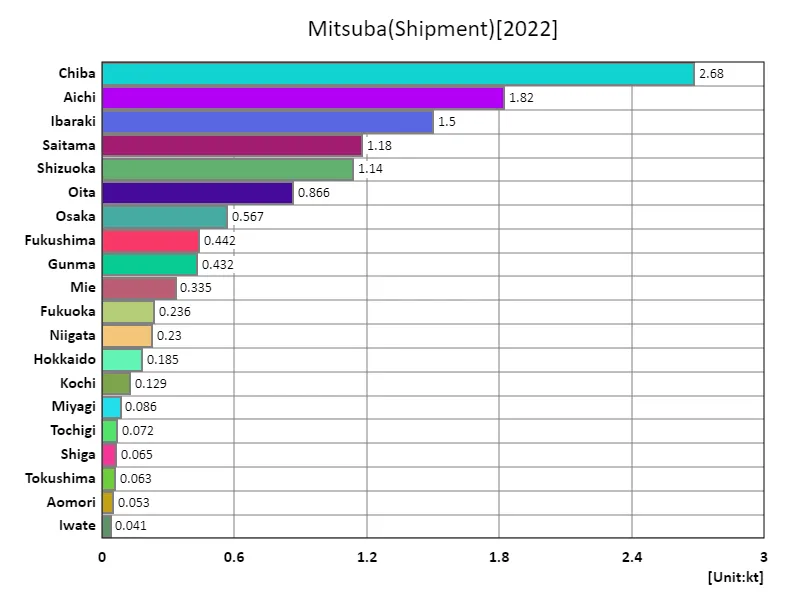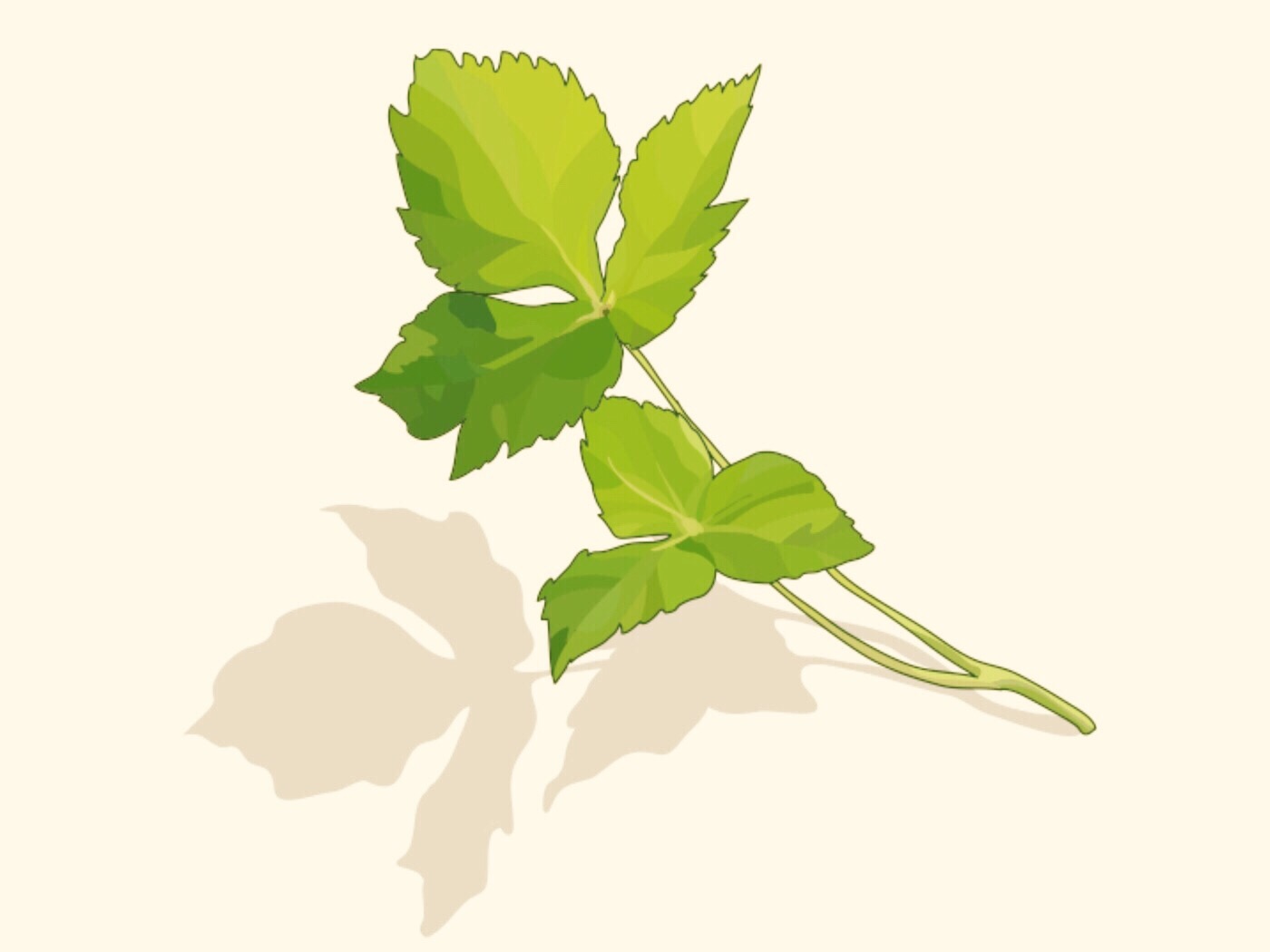Abstract
Mitsuba, a leafy vegetable popular in Japanese cuisine, has shown notable trends in its cultivation and shipping in recent years. In 2022, Japan’s national harvest volume reached a record high of 13.4kt, reflecting growth in both yield and demand. The largest cultivated area, at 826 hectares, also aligns with this peak harvest, indicating a stable expansion of production. Regionally, Chiba stands out with the highest shipping volume at 2.68kt, underscoring its importance as a major producer. Over time, Mitsuba has maintained a strong presence in Japan’s agriculture, with significant concentration in areas like Chiba, driving national output.
Mitsuba harvest yield (main data).
Mitsuba (honeybee), a popular leafy vegetable in Japan, has experienced fluctuations in harvest yield from 2002 to 2022. The highest national harvest of 18.9kt was recorded in 2002, marking its peak. Since then, harvest volumes have gradually decreased, with current yields at 70.9% of that peak level. This decline suggests a shift in production trends, possibly due to changes in agricultural practices or market demand. Despite the reduction, Mitsuba remains a staple in Japanese cuisine, with ongoing efforts to maintain its cultivation, especially in key regions like Chiba.


The maximum is 18.9kt[2002] of Japan, and the current value is about 70.9%
Mitsuba harvest volume (by prefecture).
In 2022, Chiba led Japan in the yield of leafy vegetables, with the highest output at 2.8kt. This marks Chiba’s consistent dominance in leafy vegetable production, reflecting its favorable agricultural conditions and established infrastructure for farming. Over time, other regions have seen varying levels of production, but Chiba remains the key producer. The trend suggests ongoing regional specialization in leafy vegetable cultivation, with Chiba continuing to play a pivotal role in meeting national demand. As of 2022, this trend underscores the prefecture’s agricultural strength and importance in Japan’s vegetable industry.


The maximum is 2.8kt of Chiba, the average is 349t, and the total is 13.3kt
Area cultivated with Mitsuba (main data).
Mitsuba (honeybee) cultivation in Japan peaked in 2004, with the largest planted area of 1.33kha. Since then, the planted area has gradually decreased, with current figures standing at 62.1% of the 2004 peak. This decline suggests a contraction in Mitsuba farming, possibly due to shifting market demand or changes in agricultural practices. Despite this, Mitsuba remains an important crop in Japan, and efforts to sustain its cultivation continue, particularly in regions where it has long been a staple. The trends indicate a need for innovation to maintain the viability of Mitsuba farming in the face of declining acreage.


The maximum is 1.33kha[2004] of Japan, and the current value is about 62.1%
Area cultivated with Mitsuba (by prefecture).
In 2022, Ibaraki held the largest cultivated area for leafy vegetables in Japan, with 165 hectares, maintaining its position as a key producer. This reflects the region’s favorable climate and infrastructure for vegetable farming, making it a dominant player in the leafy vegetable sector. Over time, Ibaraki has continued to expand or sustain its cultivation area, while other prefectures have seen fluctuations. The trend highlights Ibaraki’s strong role in Japan’s vegetable production, driven by both regional specialization and ongoing efforts to meet national demand for leafy vegetables.


The maximum is 165ha of Ibaraki, the average is 21.6ha, and the total is 821ha
Mitsuba shipping volume.
In 2022, Chiba recorded the highest shipping volume of Mitsuba (honeybee) at 2.68kt, continuing its leadership in production and distribution. The total national shipping volume for Mitsuba reached 12.4kt, with an average shipment of 326t per prefecture. Chiba’s dominance highlights its role as the primary hub for Mitsuba production in Japan. Over time, this trend reflects regional specialization, with Chiba maintaining a significant share of the national market. Despite fluctuations in yield and area, Mitsuba remains a popular vegetable, with Chiba driving much of its shipping volume across the country.


The maximum is 2.68kt of Chiba, the average is 326t, and the total is 12.4kt



Comments